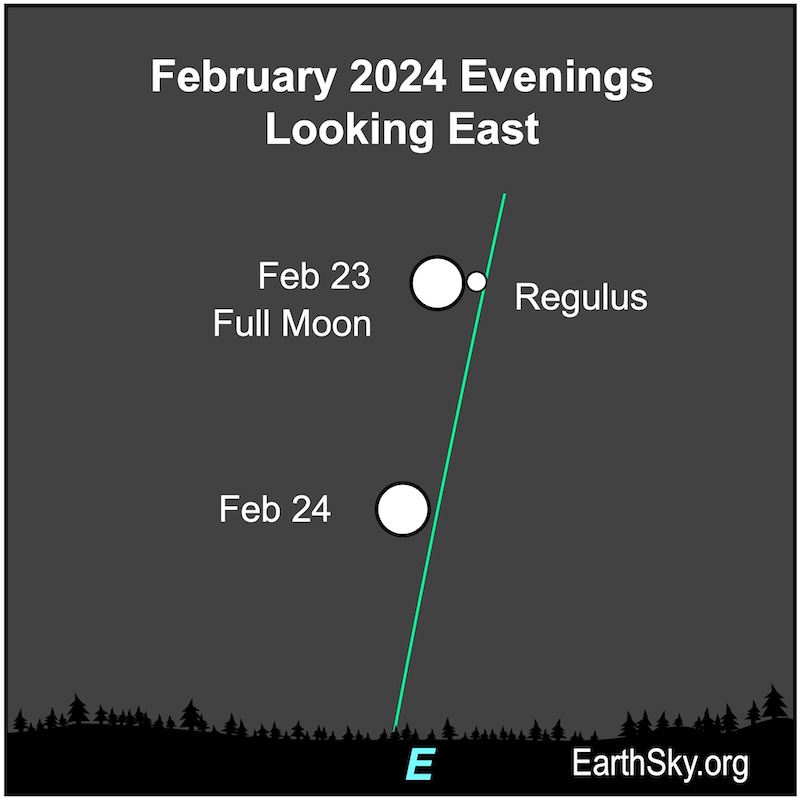
Some moons are supermoons. They’re both full and close. But the February 2024 full moon is a micromoon. It’s full and far from Earth. The fullest moon – for the whole Earth – will fall at 12:30 UTC (6:30 a.m. CST) on February 24. That’s about 30 minutes before sunrise in central North America. The moon’s farthest point, called apogee, will come at 15:00 UTC on February 25.
So, the February full moon is 2024’s farthest – and only – full micromoon this year. At apogee, its distance will be 252,225 miles (405,917 km). That’s in contrast to the average distance between the Earth and moon, 238,900 miles (384,472 km).
When and where to look in 2024: Look for the bright, round full moon ascending in the east shortly after sunset, as twilight darkens on February 23. It will glow high in the south near midnight and drop low in the west when it is at its fullest (according to clocks in the Americas) shortly before sunrise on February 24. On the evening of February 24 – when your calendar will mark the day of full moon – the moon will rise shortly after sunset, again appearing round and full in our sky.
The February full moon is also called the Snow Moon. All full moons have popular nicknames. The bright, full moon in February is also called the Hunger Moon.
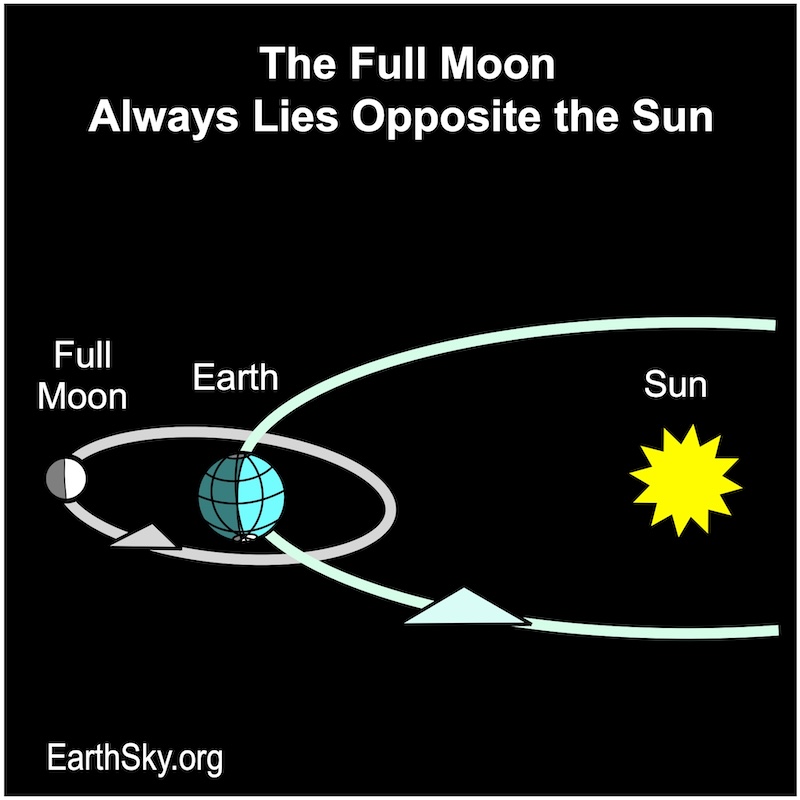
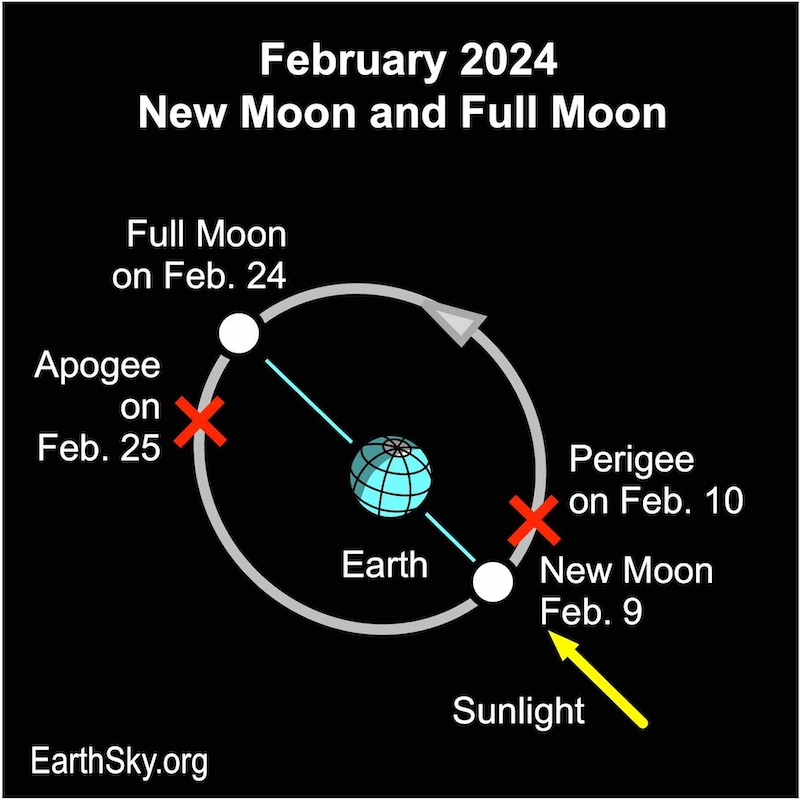
Does a full mircomoon look smaller in the sky?
A careful comparison with photos of other full moons will show that this full moon appears somewhat smaller than average in our sky. Will it look smaller to you? Probably not. But its brightness will be diminished, in contrast to other full moons.
A full micromoon can appear about 14% smaller than a full moon supermoon, and its smaller size shows in comparison photos … but its size difference is tough to see with the eye.
And, a full micromoon is about 30% less bright than a full supermoon. However, “less bright” doesn’t mean it’ll be dim! This February’s full moon will appear to shine brightly, as all full moons do. And it might appear especially bright to you if you live in a place where it is winter, where the leaves are off the deciduous trees. Does snow cover the ground where you are? If so, the moon will look brighter still.
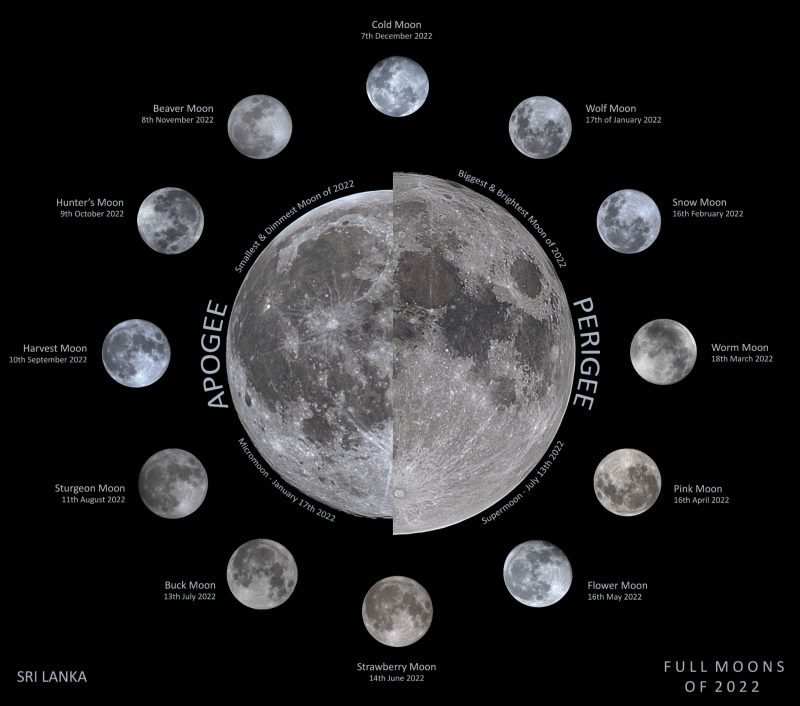
The February full moon can lie in front of one of three constellations. Two of them are constellations of the zodiac. One is not. Most years – as in this year – the fall moon lies in front of Leo the Lion. But it can also lie in front of Cancer the Crab, which is just west of Leo; this will be the case in 2026. Infrequently, full moon comes when the moon is in front of Sextans, an obscure constellation immediately south of Leo.
Occasionally – because it’s such a short month – we don’t have a full moon at all in February. That happened last in 2018. It won’t happen again until 2037.
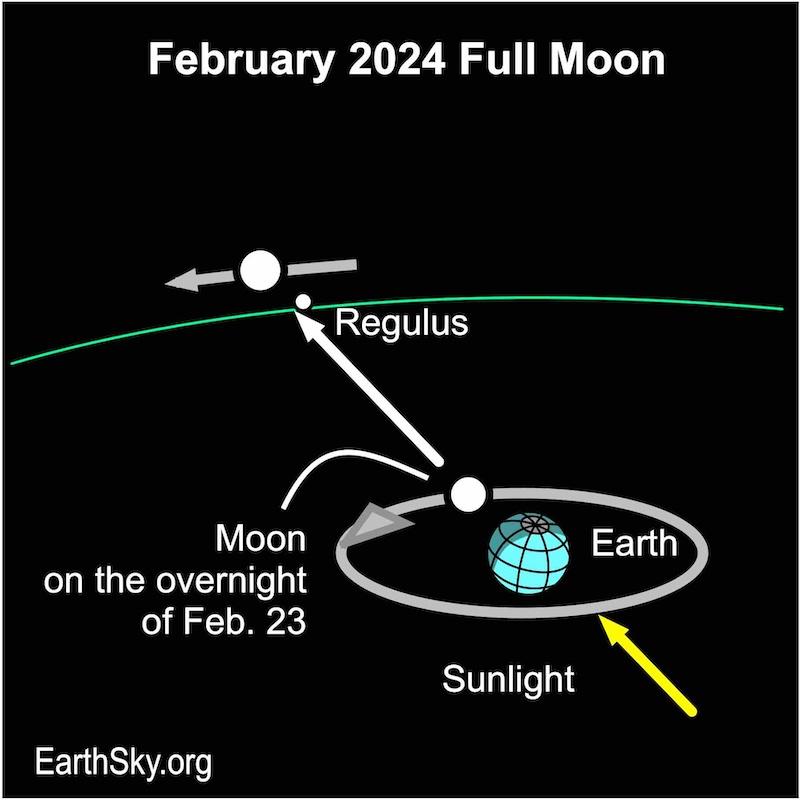
On the night of February 23, 2024, the moon shines immediately north of Leo’s brightest star, Regulus. The name Regulus means little king. Everyone on Earth will see Regulus in the moon’s vicinity on this night. To see a precise view from your location, try Stellarium.
Regulus might appear dim in the glare of the brightly lit moon. For an easier view, block the moon with your hand. Or place yourself so a distant landscape object, such as a tree branch or a utility pole, blocks the moon. That’ll give you a better view of the star!

Since the full moon is always opposite the sun in the sky, the February full moon lies about where the sun will be six months from now. In fact, the blindingly bright sun moves directly below Regulus – in an event called a conjunction – in the August 23 daytime sky, six months after the full moon was just north of Regulus.
Bottom line: The full Snow Moon happens overnight on February 23-24, 2024. It’s the smallest full moon of 2024 and glows near the bright star Regulus in Leo.











